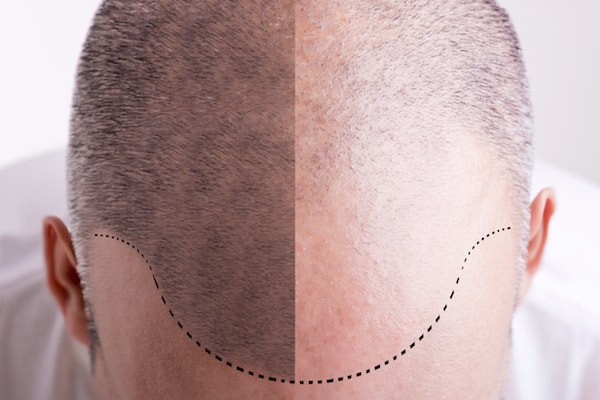
While fat grafting is commonly performed during cosmetic surgery for resurfacing and reconstructive issues, the survival rate of fat graft transfers still varies greatly and can be anywhere from 20\\%-90\\% depending on the patient. While some studies have shown that fat transferred in small volumes has a better survival rate, other studies have shown that fat grafting performed in a larger volume can suffer from a lack of nutrients and lead to fat necrosis, cysts and other issues.
Clinical Study about Applying Sub-Atmospheric Pressure at the Recipient Site
Since mechanical forces play a big part in the remodeling of tissues and some wound healing, studies have been conducted to determine if applying sub-atmospheric pressure through the use of external tissue expansion devices can increase the survival of injected fat at the recipient site. The underlying mechanism that causes the increased survival rate is unknown but an increase in cell proliferation and vascular remodeling has been seen in rodents. While small mammals are not the same as humans in their anatomy, it has been shown that the epidermis to dermis ratio in swine is similar to human skin tissue.
A study was recently performed using an external tissue expansion device (ETED) on a porcine model in order to spotlight the mechanisms of negative pressure pretreatment of recipient sites to an overall increase in the survival rate of fat grafts. A clear plastic suction cup measuring 3.5-cm in diameter and 5-cm in height was applied to the dorsum of the swine and fitted with a silicone gel sheet to reduce the risk of pressure sores. The pump was used to provide continuous negative pressure and a pressure meter was used to monitor the pressure.
The test subject pigs underwent a treatment course of 1 or 3 hours of continuous negative pressure at 70 mmHg every other day resulting in a total experimental period of 20 days or 40 days depending on the number of applications. Once the treatment was completed, an area of skin was harvested and the specimens were cut into two pieces for study.
Study Results Impact on Hair Follicles
The results showed that with low negative pressure and short treatment times, wrinkle folds were observed on the epidermis and this suggests that the ETED treated space might provide an environment for large fat grafting. In fact, the epidermis thickness increased during the duration of the treatment. Scientists say that the epidermis thickening was a consequence of a higher cell proliferation rate induced by ETED treatments rather than the recruitment of adjacent skin tissue.
The study team also noticed an increase in the number of hair follicles with ETED treatment. There are a few explanations for the increase in hair follicles:
Angiogenesis is associated with active hair growth and VEGF, which is a large angiogenesis component, has been known to be a mediator of hair follicle growth and cycling. The findings show that the enhancement in recipient site angiogenesis might promote hair growth due to a change from the hair resting stage to the hair cycle active stage.
Another possible explanation is that the negative pressure resulted in hypoxia which is a deficiency in the amount of oxygen reaching the tissues. The study suggests hypoxia in the microenvironment might promote hair growth thanks to the elevation of prostaglandin F2 levels. However, further studies need to be performed to reach a definitive conclusion.
The results from the study also provide insights into the potential mechanisms underlying the success of the ETED treatment which may be used to improve the clinical outcome of fat grafting. After various tests were carried out, optimal conditions were identified that made it possible to examine the effect of the ETED in a large animal model. Compared to small animal models, the porcine model is much more similar to the human system.
With low negative pressure and short periodical treatment, wrinkle, folds and creases were observed on the epidermis which leads to an increase in the interstitial space. These results are consistent with clinical findings and forms the basis for the theory that the space treated with the ETED could provide an environment for large fat grafting.
The thickness of the epidermis increased with treatment duration. Staining for proliferating cells (Ki67-positive) suggested that the thickening of the epidermis was the consequence of a higher cell proliferation rate induced by ETED treatments rather than the recruitment of adjacent skin tissue. Similar observations on highly proliferative epidermal tissue with negative pressure application were made in a murine model.
Increased blood vessel density was also observed with ETED treatment. One-hour ETED treatment was sufficient to elevate the blood vessel density. Increased levels of growth factors involved in the angiogenic cascade include FGF, VEGF and PDGB-BB. Also, the levels of angiogenic factors were higher in the 3-hour ETED treatment group which suggests that the longer the use of the ETED, the greater the vascular remodeling.
Reasons for the Study
The study was designed to use porcine models to investigate the ETED effects on the recipient site and to possibly develop a strategy to enhance large volume fat grafting survival rates. Thanks to its similarity to human skin, porcine studies give scientists a better grasp of the workings of ETED treatment. The results from the ETED treatment that involved hair follicle stimulation might one day lead to a new form of hair loss treatment. beyond a hair transplant.